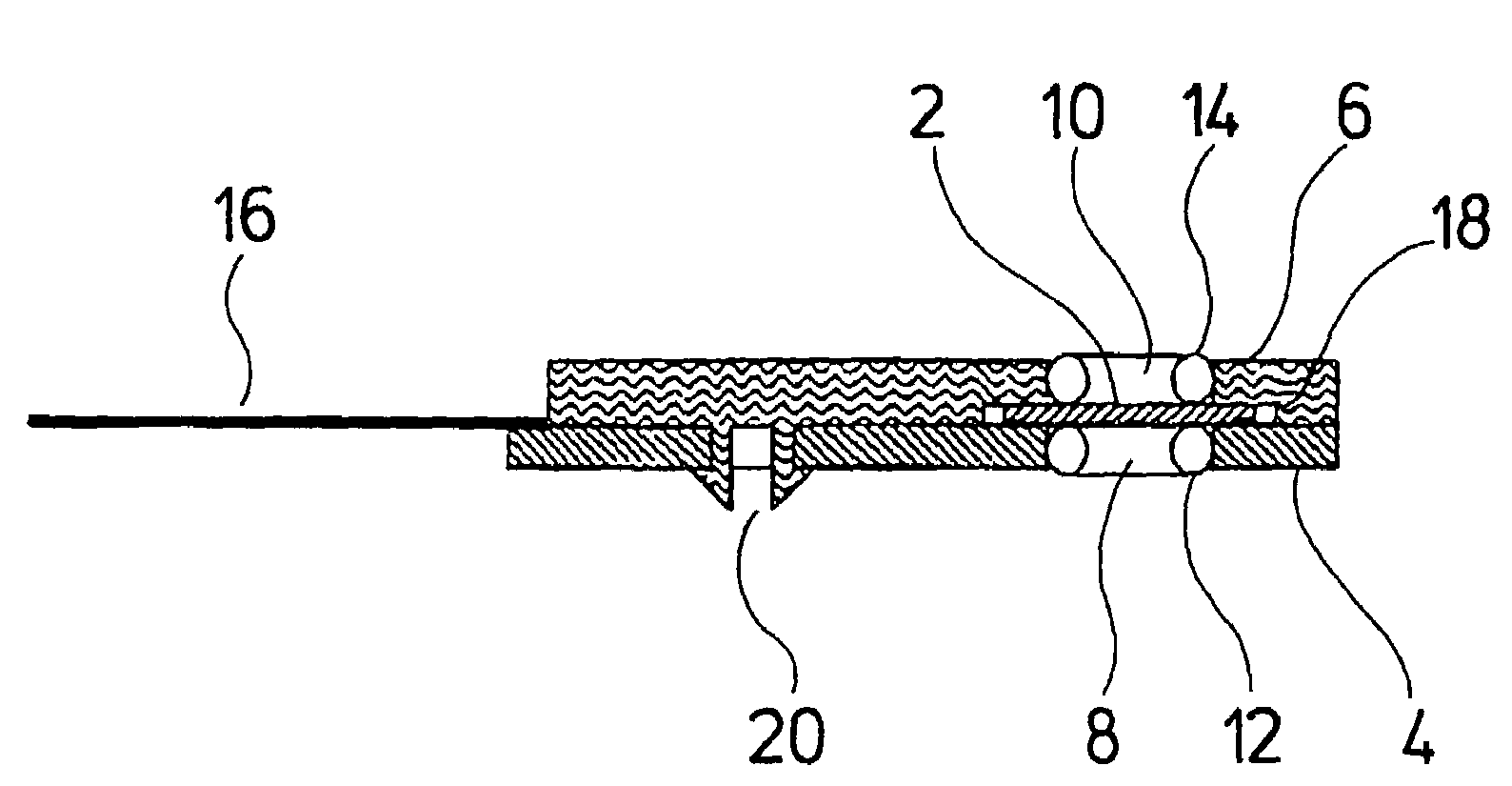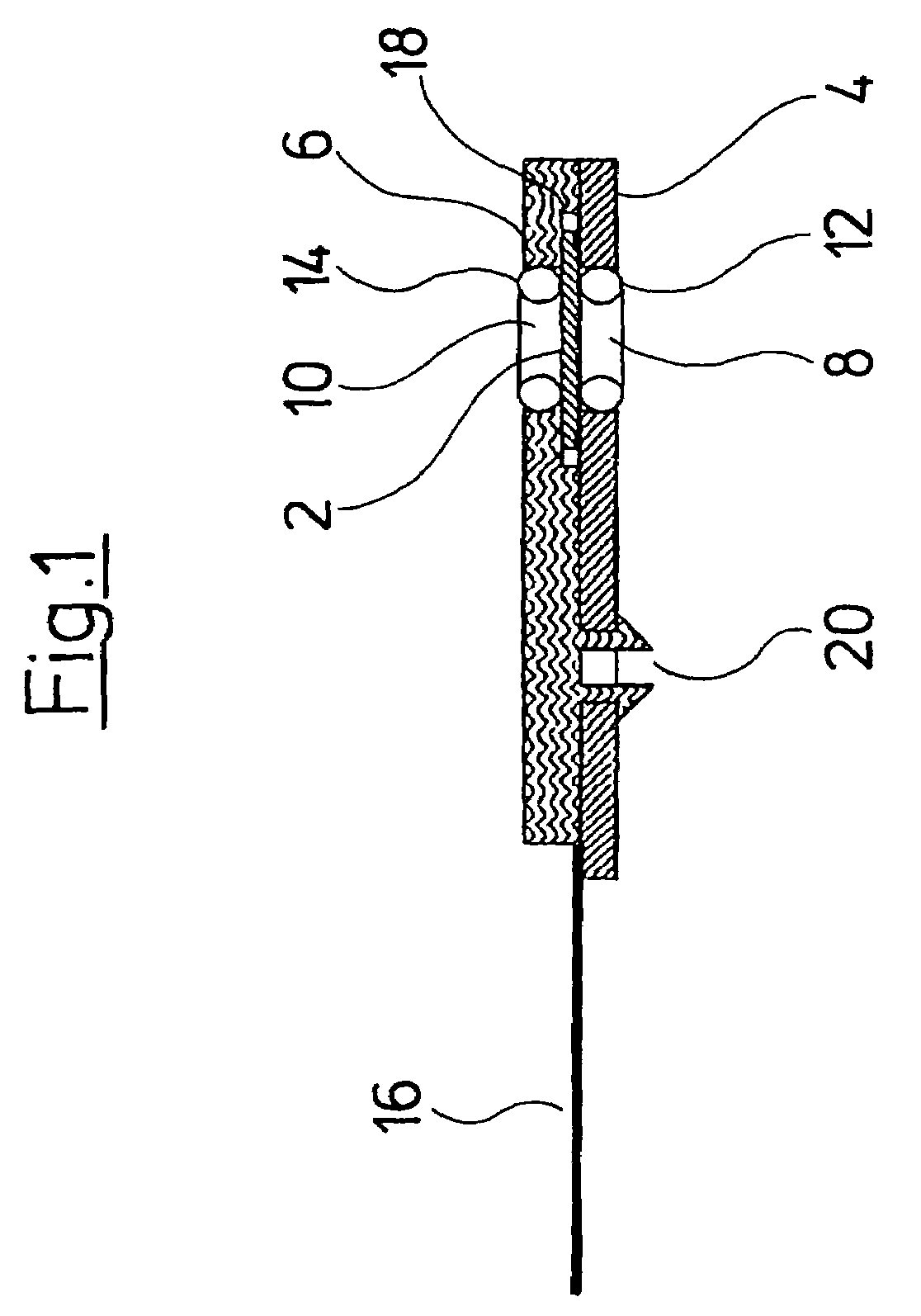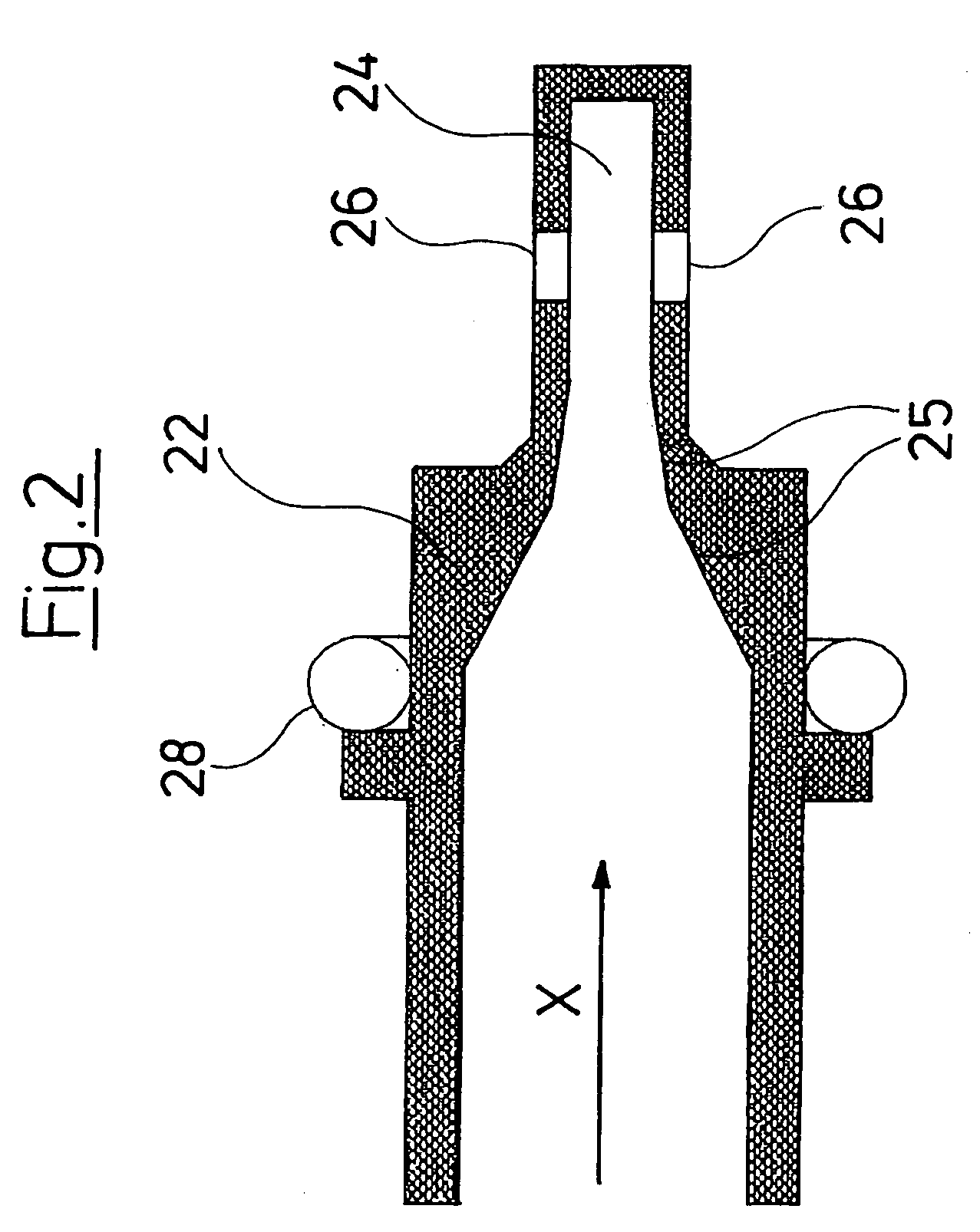Pressure sensor
a technology of pressure sensor and housing, which is applied in the direction of fluid pressure measurement using elastically deformable gauges, measuring devices, instruments, etc., can solve the problems of complex installation of pressure sensor into housing, difficult to design the housing as one piece, and complicated construction of pressure sensor
- Summary
- Abstract
- Description
- Claims
- Application Information
AI Technical Summary
Benefits of technology
Problems solved by technology
Method used
Image
Examples
Embodiment Construction
[0029]FIG. 1 shows a sectioned view of a part of the pressure sensor according to the invention. The pressure sensor comprises a diaphragm 2 on which at least one measurement element is formed for detecting a pressure. For pressure detection the diaphragm 2 is designed as is described in the European Patent application 97 105 396.2. The pressure detection is effected via the deflection of the diaphragm 2 which is detected via the measurement elements arranged on the diaphragm 2. The diaphragm 2 is arranged between two holding elements 4 and 6. Two through-holes 8 and 10 which are flush with one another are formed in the two holding elements 4 and 6. The through-holes 8 and 10 serve for fixing two sealing rings in the form of O-rings 12 and 14. The holding element 14 is designed as a circuit board on which further electronic or electrical components or connections are arranged, in order to transmit and / or process the signals produced by the measurement elements arranged on the diaphr...
PUM
| Property | Measurement | Unit |
|---|---|---|
| size | aaaaa | aaaaa |
| thickness | aaaaa | aaaaa |
| pressure | aaaaa | aaaaa |
Abstract
Description
Claims
Application Information
 Login to View More
Login to View More - R&D Engineer
- R&D Manager
- IP Professional
- Industry Leading Data Capabilities
- Powerful AI technology
- Patent DNA Extraction
Browse by: Latest US Patents, China's latest patents, Technical Efficacy Thesaurus, Application Domain, Technology Topic, Popular Technical Reports.
© 2024 PatSnap. All rights reserved.Legal|Privacy policy|Modern Slavery Act Transparency Statement|Sitemap|About US| Contact US: help@patsnap.com










